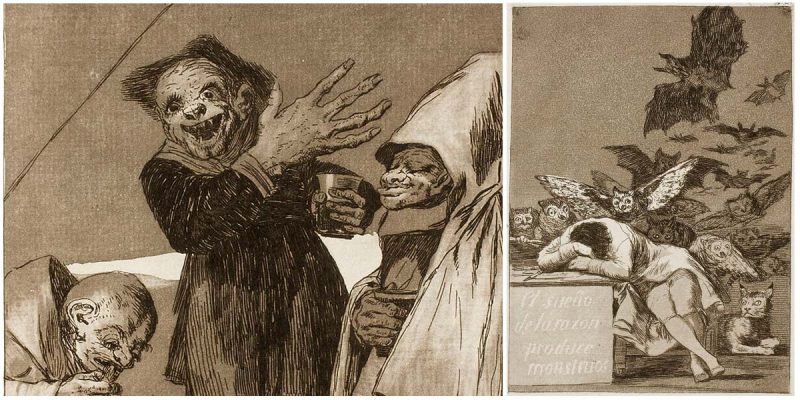Francisco José de Goya y Lucientes was a romantic painter and printmaker who is regarded as the most important Spanish artist of the eighteenth and early nineteenth centuries.
He is often referred to as both the last of the Old Masters and the first of the moderns. The son of a quilter, Goya spent some of his youth in Zaragoza.
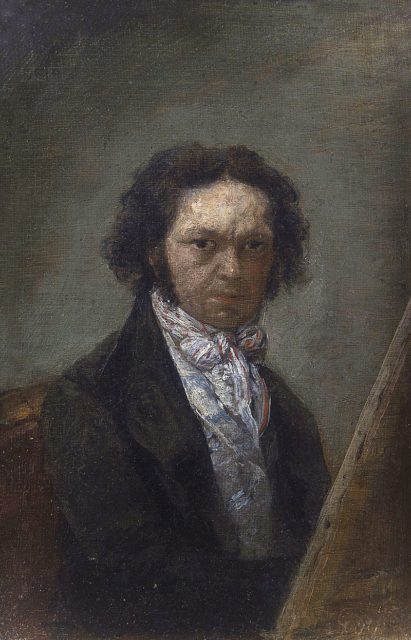
At age 14, he studied under the painter José Luzán, and in Luzán’s workshop, copied stamps for four years until he decided to work on his own. In 1783, he became a court painter, when the Count of Floridablanca, favorite of Charles III of Spain, commissioned him to paint his portrait. After this portrait, he painted a lot of royalties and in 1786 was given a salaried position as a painter to Charles III.
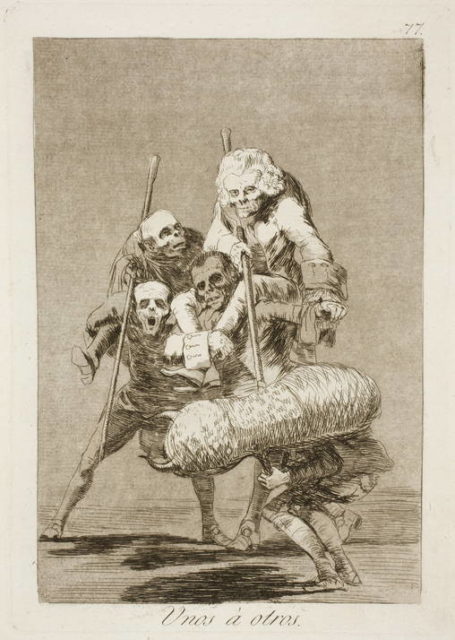
In 1793, Goya suffered a severe and undiagnosed illness which left him completely deaf. After 1793, his work became progressively darker and more pessimistic. Every painting, print, and drawing reflected a bleak outlook on personal, social, and political levels, and contrast with his social climbing.
In 1799, he published a series of aqua tinted etchings, the Caprichos – completed in parallel with the most official commissions of portraits and religious paintings.
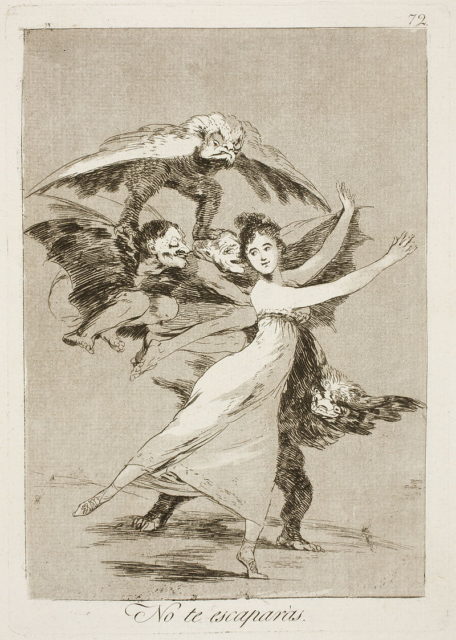
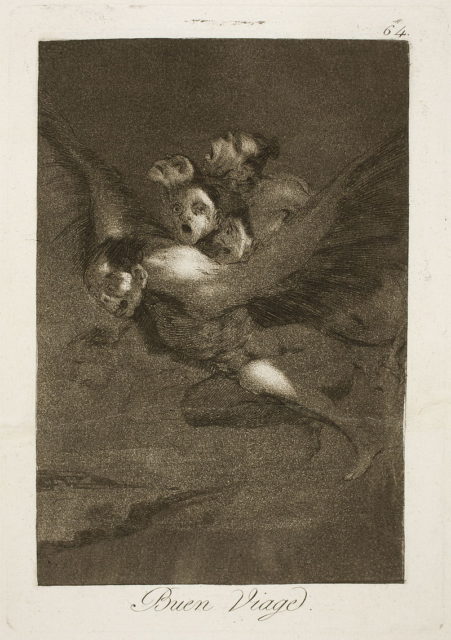
The etchings were an artistic experiment where Goya spoke about the predominance of superstition, the ignorance and inabilities of the various members of the ruling class, pedagogical short-comings, martial mistakes and the decline of rationality. Goya’s masterly use of aquatint for tonal effects gives Los Caprichos amazing dramatic vitality and makes them a major achievement in the history of engraving.
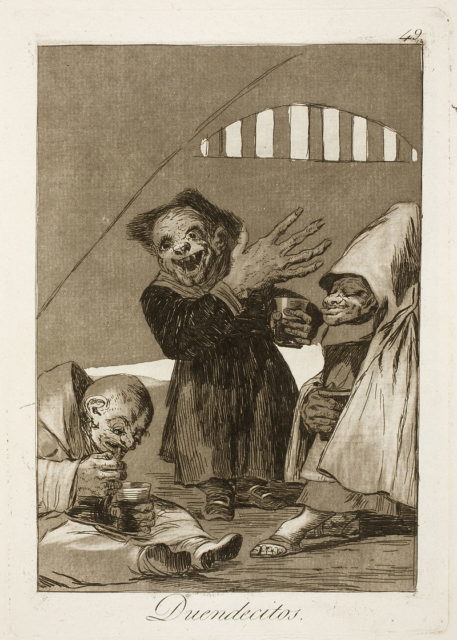
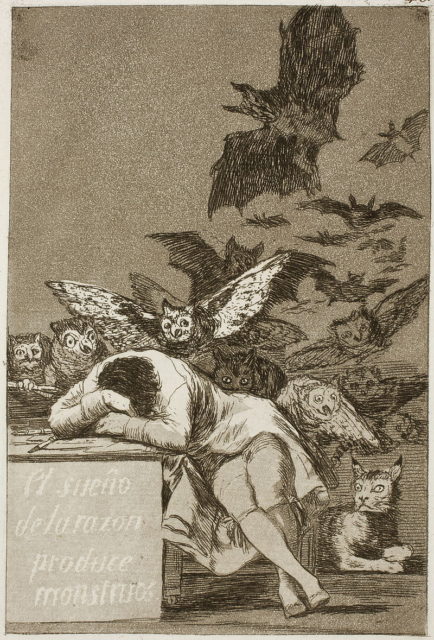
One of the most specific etchings was the 43rd out of 80, named the The Sleep of Reason Produces Monsters. In this etching, Goya imagines himself asleep amidst his drawing tools, his reason dulled by slumber and bedevilled by creatures that prowl in the dark.
The work includes owls, which are symbols of folly, and bats, which are symbols of ignorance. This work represents the author’s nightmare, which is an analogy for the corrupt Spanish society.
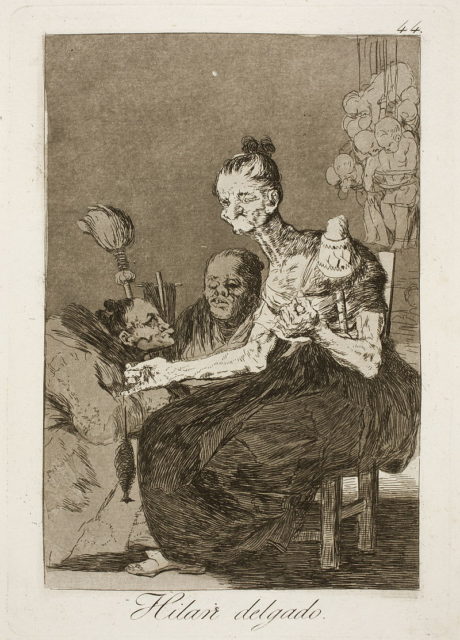
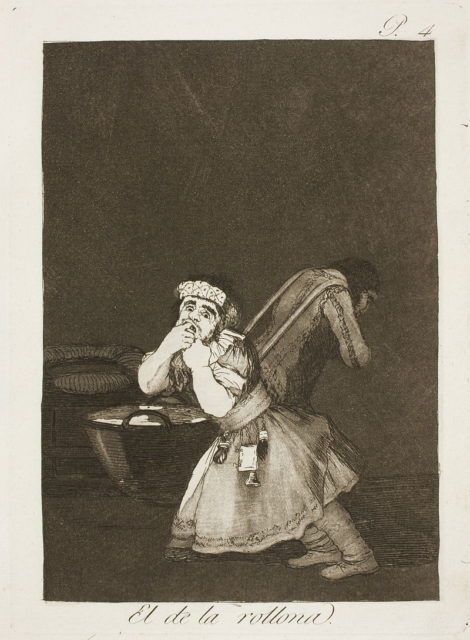
Los Caprichos were withdrawn from public sale very shortly after their release in 1799. In 1803, Goya offered the Capricho’s copper plates and the first edition’s unsold sets to King Charles IV. Later in life, Goya wrote that he had felt it prudent to withdraw the prints from circulation due to the Inquisition.
Goya abandoned Spain in 1824 to retire to the French city of Bordeaux, accompanied by his much younger maid and companion, Leocadia Weiss. Following a stroke which left him paralyzed on his right side, Goya died and was buried on 16 April 1828 at the age of 82.
